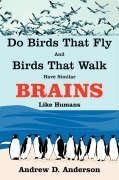
-
 Anglický jazyk
Anglický jazyk
Do Birds That Fly and Birds That Walk Have Similar Brains Like Humans
Autor: Andrew D. Anderson
Flying birds have a thick coat of down and feathers that protect their body a specialized circulatory system constricts blood flow to their specialized versatile feet, and a digestive system quickly converts food into energy that begins with the bill.
...
Viac o knihe
Na objednávku, dodanie 2-4 týždne
22.18 €
bežná cena: 25.20 €
O knihe
Flying birds have a thick coat of down and feathers that protect their body a specialized circulatory system constricts blood flow to their specialized versatile feet, and a digestive system quickly converts food into energy that begins with the bill.
Migration is genetic with cold weather destroying food. Alterations in temperature and light stimulate the pituitary and adrenal glands into releasing two hormones that encourage fat storage for fuel used in migrating.
Birds that fly have the abilities to learn and use tools to solve problems. The brain in humans and birds is the seat of the mind which interacts with the body through the senses and muscles. It receives sensory information from eyes and ears. The sensor cells in the nervous system transition external stimuli into electrical impulses that are conducted through the sensory nerves to regions in the brain.
Penguins are genetically programmed to walk in single file 70 or more miles from the ocean to their rookeries where they meet their mates, build nest, lay eggs and hatch their young keeping the egg warm while the other mate walks back to the sea to eat and get food to bring back to the young.
- Vydavateľstvo: AuthorHouse
- Rok vydania: 2007
- Formát: Paperback
- Rozmer: 229 x 152 mm
- Jazyk: Anglický jazyk
- ISBN: 9781425978518


 Nemecký jazyk
Nemecký jazyk 








